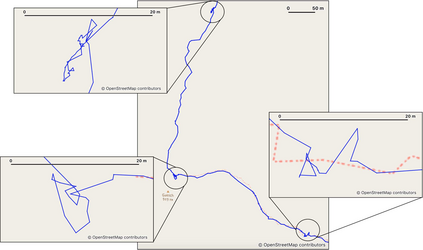Hikers and hillwalkers typically use the gradient in the direction of travel (walking slope) as the main variable in established methods for predicting walking time (via the walking speed) along a route. Research into fell-running has suggested further variables which may improve speed algorithms in this context; the gradient of the terrain (hill slope) and the level of terrain obstruction. Recent improvements in data availability, as well as widespread use of GPS tracking now make it possible to explore these variables in a walking speed model at a sufficient scale to test statistical significance. We tested various established models used to predict walking speed against public GPS data from almost 88,000 km of UK walking / hiking tracks. Tracks were filtered to remove breaks and non-walking sections. A new generalised linear model (GLM) was then used to predict walking speeds. Key differences between the GLM and established rules were that the GLM considered the gradient of the terrain (hill slope) irrespective of walking slope, as well as the terrain type and level of terrain obstruction in off-road travel. All of these factors were shown to be highly significant, and this is supported by a lower root-mean-square-error compared to existing functions. We also observed an increase in RMSE between the GLM and established methods as hill slope increases, further supporting the importance of this variable.
翻译:徒步走和山地步行通常使用行进方向的坡度(行走坡度)作为预测沿着路线行进的时间(通过行走速度)的主要变量。野跑研究表明,这个背景下可能会有进一步的变量来改进速度模型,包括地形的坡度(山坡角)和地形障碍的级别。最近数据可用性的提高,以及 GPS 跟踪的广泛使用,使我们有可能探索这些变量在足迹速度模型中,以足够大的规模来测试统计显著性。我们使用来自近 88,000 km 的英国步行和徒步追踪的公共 GPS 数据测试了各种用于预测行走速度的模型。轨迹被过滤以删除间断和非行走部分。然后,使用新的广义线性模型(GLM)预测行走速度。GLM 和现有规则之间的关键差异在于,GLM 不考虑行走坡度,而是考虑地形的坡度(山坡角)以及野外行进的地形类型和障碍等级。所有这些因素都被证明是非常显著的,并且与现有函数相比具有较低的均方根误差。我们还发现,在 GLM 和已有方法之间的 RMSE 随着山坡角的增加而增加,进一步支持了这个变量的重要性。













































































